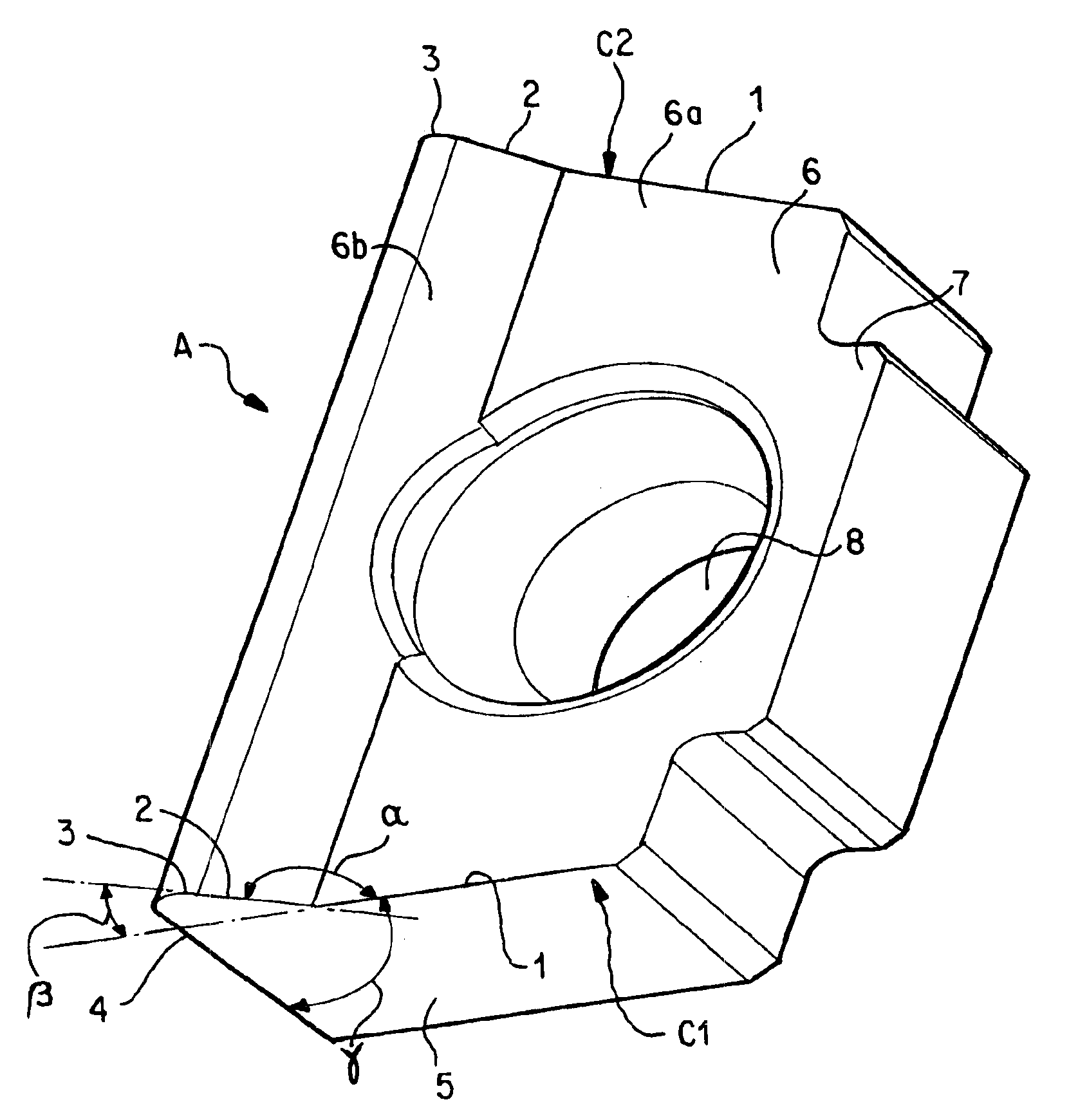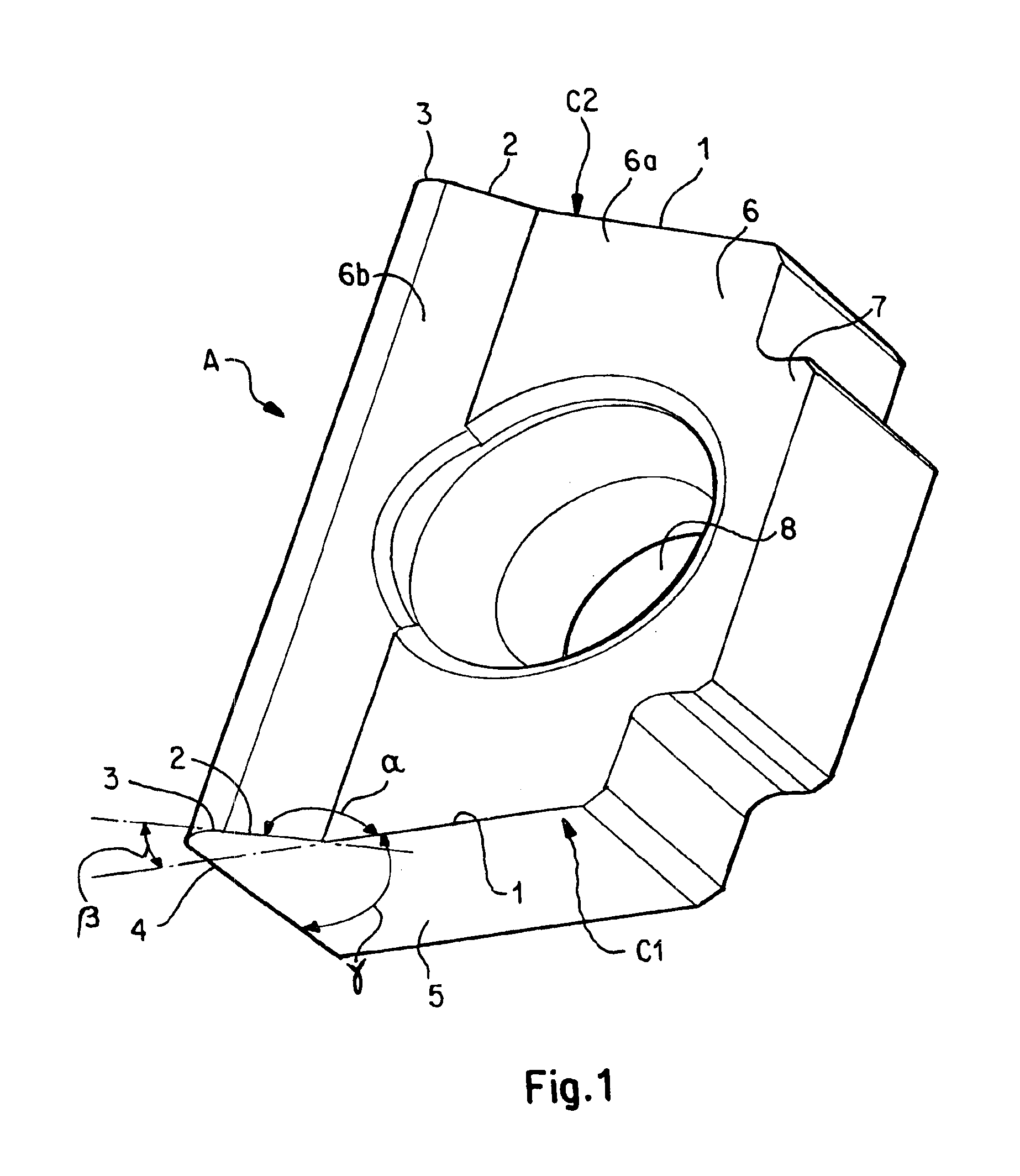Cutting insert for camshaft milling cutters
a cutting insert and milling cutter technology, applied in the field of cutting inserts, can solve the problems of high consumption of cutting inserts, the insufficient dimension accuracy of the cast camshaft for being used as a camshaft, etc., and achieve the effect of more economics
- Summary
- Abstract
- Description
- Claims
- Application Information
AI Technical Summary
Benefits of technology
Problems solved by technology
Method used
Image
Examples
Embodiment Construction
[0034]FIG. 1 shows a perspective view of a first embodiment of a cutting insert A according to the present invention. Roughly approximated, the cutting insert is square, but with some deviations from this basic shape that will be explained hereinafter. The insert comprises a number of surfaces including a top flank 6, a bottom flank 6a and peripheral edge surfaces 5a-5d. Two opposite ones of the peripheral edge surfaces 5a, 5b of the square that are not exactly parallel, but are inclined towards one another at an angle of 16° form faces that adjoin cutting edges 1, 2, 3 that are formed by the transition between the face 5a and the top flank 6 substantially perpendicular thereto. A fixing bore 8 extends perpendicular to, and passes through, the flank 6, which bore is provided for receiving a screw or a screw head for fastening the cutting insert to a milling tool.
[0035]The flank 6 is not a complete planar surface, but instead, in addition to a planar section 6a along an edge extendin...
PUM
| Property | Measurement | Unit |
|---|---|---|
| obtuse angle | aaaaa | aaaaa |
| obtuse angle | aaaaa | aaaaa |
| obtuse angle | aaaaa | aaaaa |
Abstract
Description
Claims
Application Information
 Login to View More
Login to View More - R&D
- Intellectual Property
- Life Sciences
- Materials
- Tech Scout
- Unparalleled Data Quality
- Higher Quality Content
- 60% Fewer Hallucinations
Browse by: Latest US Patents, China's latest patents, Technical Efficacy Thesaurus, Application Domain, Technology Topic, Popular Technical Reports.
© 2025 PatSnap. All rights reserved.Legal|Privacy policy|Modern Slavery Act Transparency Statement|Sitemap|About US| Contact US: help@patsnap.com



